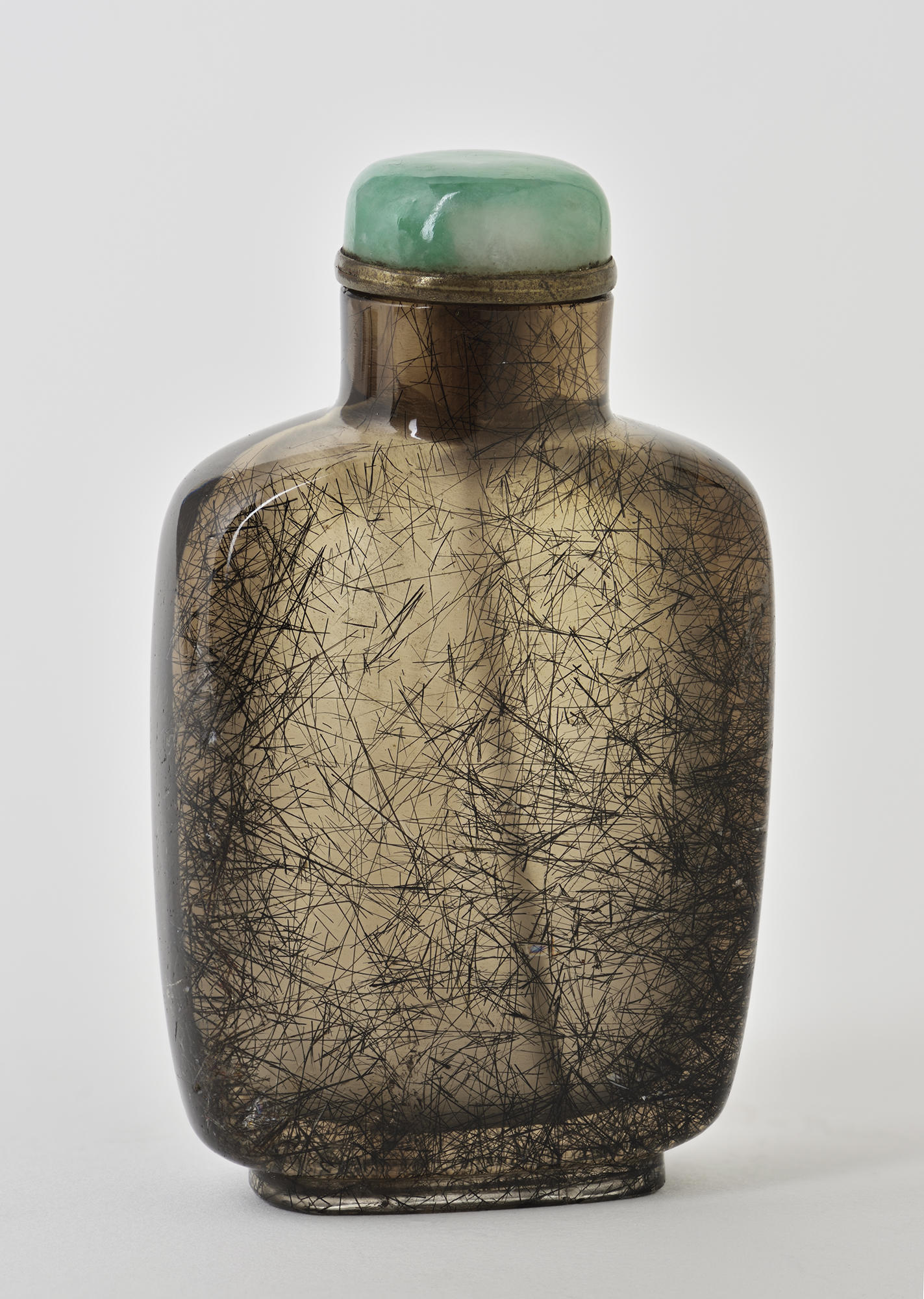These bottles were created to hold snuff—a powdered tobacco flavored with various aromatic spices and essences meant to be inhaled through the nose or rubbed on the gums.¹ It was thought to be medicinal for the common cold, headaches, and stomach bugs.²
Tobacco was first introduced to China by European missionaries, envoys, and merchants in the late 1500s and by the turn of the century, it became a regular import.³ However, the typical container in which the tobacco was held, was considered impractical for consumers in Asia. Europeans kept their snuff in boxes, but in the humid conditions of Asia, the large hinged lids could not keep the dry snuff from spoiling, so a new container design was needed. Chinese medicine bottles were the perfect form to inspire the shape of snuff bottles, with their soft edges and tiny mouths. The air-tight stopper and small scoop was a design addition for snuff over dried herbs.















